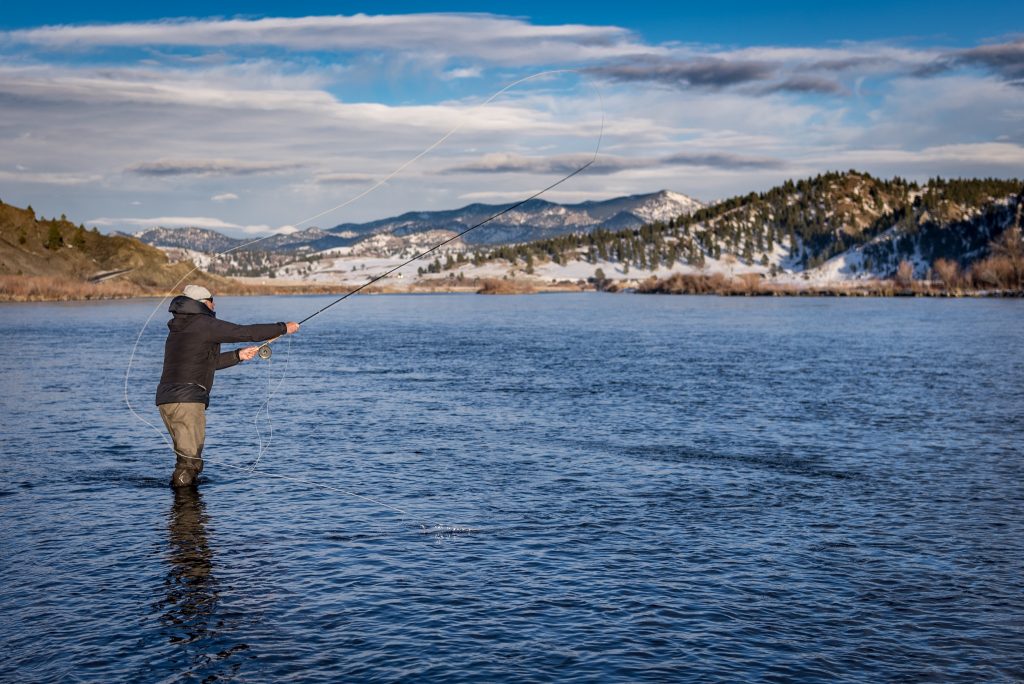5 Ways to Control the Speed of Your Swing

When swinging for anadromous species like king salmon or steelhead, more often than not, the slower the swing the better. As long as it is moving just enough to suggest life in your fly, odds are you are in the game. However, from time to time, increasing the speed of your swing can be just the ticket when trying to coax up a hot salmon or steelhead. We are fortunate at Alaska West to fish a river tailored for swinging flies where the runs are long, slow, and uniform. Here, it is possible to get by with little more than a downstream and across presentation, a big mend, and letting it swing on through.
However, this is often not the case in most salmon and steelhead rivers. Careful manipulation of your line is critical in executing an effective swing. Swing speed is affected by a number of factors that differ from one run to the next, and it is our job as anglers to figure out the most effective presentation and swing speed possible to get ol' lockjaw to eat! Whether looking to speed your swing up, or slow it way down, here are 5 ways to control the speed of your swing.
- Mend. A good mend is by far the most common way of adjusting swing speed. A mend is nothing more than a re-positioning of line after the cast is made, and while we'll save the multitude of mend types for another article, an effective mend works wonders for adjusting the speed of your swing. In extremely simple terms, an upstream mend of the line will slow your swing down, and a downstream mend will speed your swing up. We could go into aerial mends, stack mends, and so on, but we want you to make it work on time this morning!
- Change Your Casting Angle. The closer you cast perpendicular to the direction of the current (in other words, straight across the river) the faster your fly will swing. On the other hand, the closer you cast parallel to the direction of the current ( in other words, more downstream) the slower your fly will swing. Casting straight across the river allows for more area of the current to act upon your fly line as opposed to a cast presented downstream and across. Don't get hung up on trying to cover the entire run by attempting to hit the opposite bank. Fish only what you can cover and fish effectively, not what you can cast to.
- Move Your Feet. An often-overlooked method of adjusting the speed of your swing is changing your physical position in the water. Wading further out into the river even a few steps can slow your swing speed down just enough to spark the fish's interest. Simply changing the distance between you and the fly will change the speed at which the fly will swing. As always however, safe wading takes precedence over swing speed.
- Re-position Your Rod Tip. As we mentioned above, altering the distance between you and the fly will adjust the speed of your swing. However, as far as the swing is concerned, your line is anchored off of your rod tip. Therefore, re-positioning your rod tip can greatly affect the speed of your swing. If using a long spey or switch rod, reaching out with the rod towards the center of the water essentially puts you 12-15 feet (depending on the length of your rod) further into the river, lessening the distance between you and the fly, thus slowing it down. On the other hand, pointing the rod directly downstream, or even towards the inside bank, will cause a downstream belly to form in the line, causing the swing to speed up. Lifting the rod in a vertical direction can also aid in lifting line over variable currents that may otherwise change the speed of your swing as well.
- Lead or Follow Your Fly. As your fly swings, a subtle change that can make all the difference is leading or following your fly with the rod tip. Rather than point your rod tip towards your fly, slightly follow the position of your fly with the rod tip as it swings through. This will cause your swing to slow down ever so slightly while also offering a'butt first' presentation. On the other hand, leading the position of your fly with the rod tip allows a downstream belly to form in your line, causing your swing to speed up while offering a more'broadside' presentation of the fly. Both presentations have their place and it is up to you to figure out the most effective presentation for the run at hand.
Source: https://deneki.com/2021/11/deneki-chronicles-5-ways-to-control-the-speed-of-your-swing/























